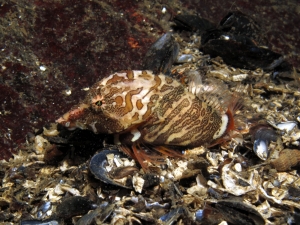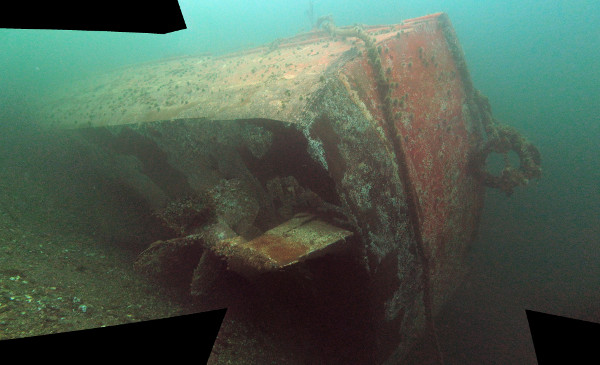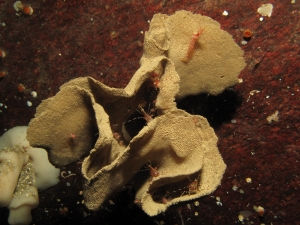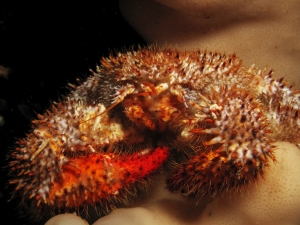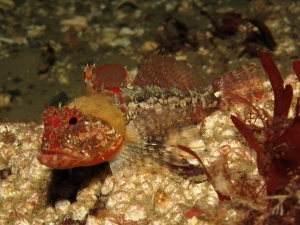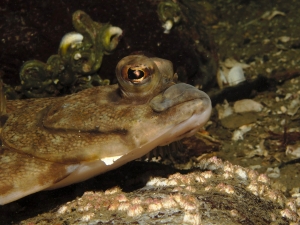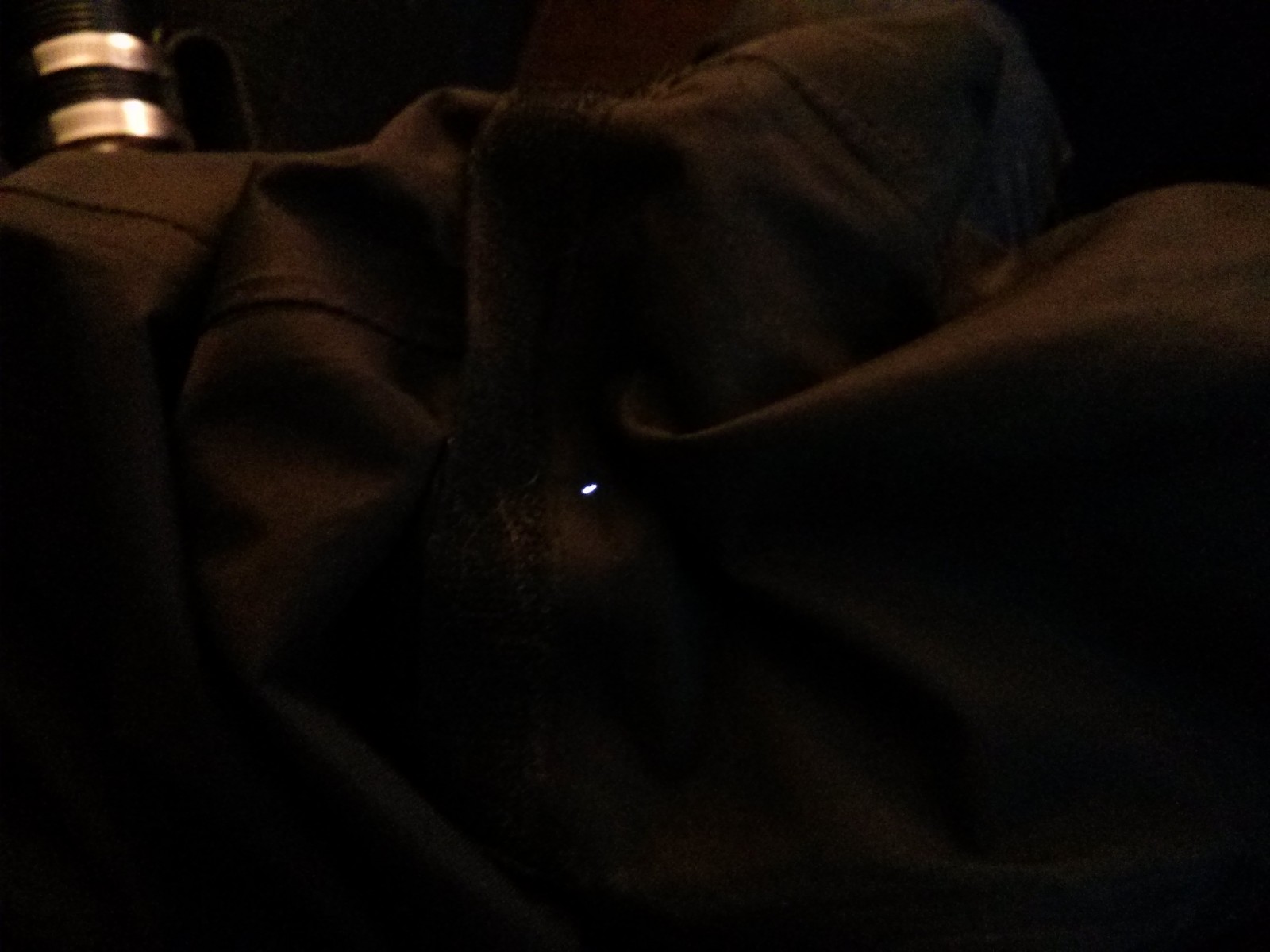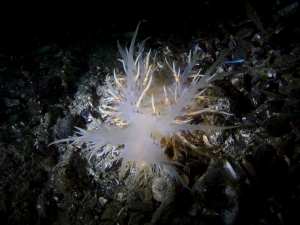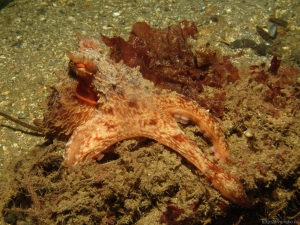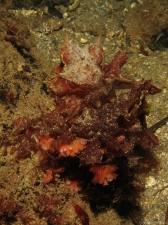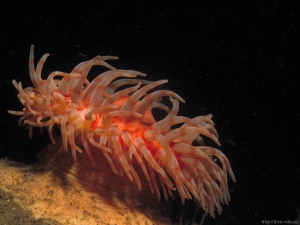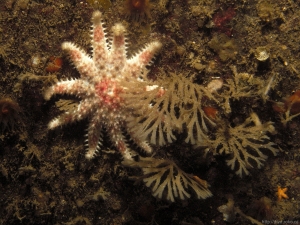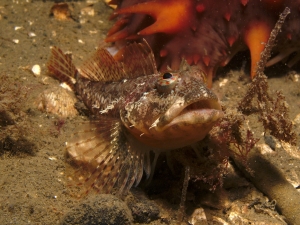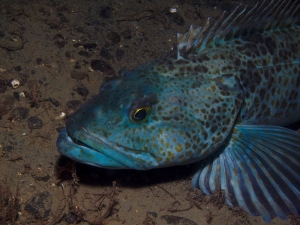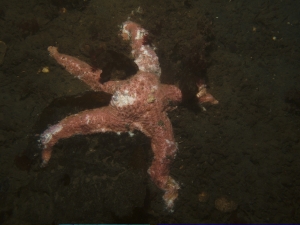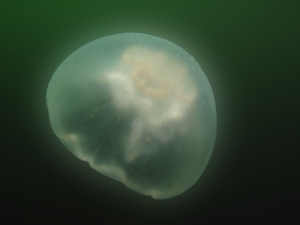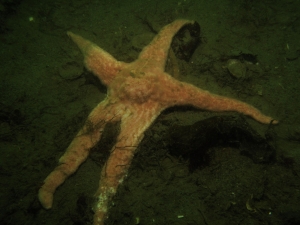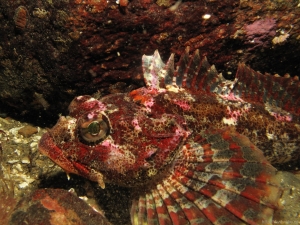
A Crimson Anemone. Note the translucent tentacles with green tips.
30-Nov-13: I’ve improved upon the colours in some of these photos after messing around with the RAW files, and added some new ones. More info below.*
Armed with brand new batteries in my strobe, we hooked up to Furry Creek for a couple of dives. I haven’t dove Furry Creek in over a year, but it was nice to get back to one of my local favourite spots. Thankfully, we were treated with perfect surface conditions, a high slack tide and amazing visibility (for Vancouver, at least).
Having proper batteries in my strobe helped a lot, and I took a lot of photos, many of which were interesting subjects and some that turned out very nicely. Of particular treat was a juvenile GPO which I spotted popping it’s head out from it’s den. Even tucked away in his den, it made an amazing photo subject that was slowly started inching out towards us. A special thanks goes to my dive buddies, putting up with me obsessing over getting photos of this guy!
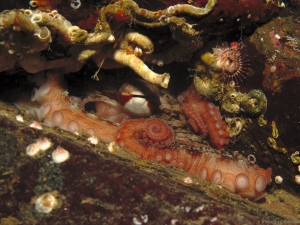
A little octopus.
Other treats were some really interesting Crimson Anemones, with a light pinkish hue and green-tipped tentacles. I got in close for a couple photos, which turned out amazingly well – A lot of details on these anemones.
In the rocky area in the cove were plenty of large sculpins, including a Buffalo Sculpin guarding an egg mass. I struggle at identifying sculpins, as they all look the same to me, but I took a shot at trying to identify some of the different ones I saw.
Interestingly, there were a couple of piles of starfish goo. I also found a few starfish arms scattered around, but I’m unsure if they were related to the starfish wasting syndrome, or a starfish that fell victim to another animal.
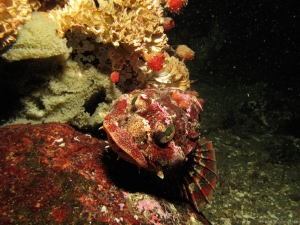
Red Irish Lord guarding an egg mass.
I think I’ve set a record for myself, with 37 photos I considered bloggable. Although many of the photos aren’t the best in terms of focus, composition, exposure, etc, I thought they all showed interesting subjects that I wanted to remember down the road.
*30-Nov-13: After messing around with RAW files in Darktable for the past little while, I’ve come to thoroughly appreciate the in-camera JPEG processing that my camera does. For the most part, I’ve been having trouble getting the RAW photos looking as nice as the JPEGs, especially with the rich reds that Canon cameras add — Very noticeable with the dull colours and lack of contras.
I’m sure there’s a way to replicate the in-camera processing in Darktable, but I haven’t cracked that nut yet. For the most part, I’ve decided to switch back to just touching up the JPEGs for most of my photos, unless they need more correction than the JPEG files will allows. Interestingly, JPEGs allow a lot of flexibility for decently exposed shots. I’ve gone ahead and tweaked the JPEGs from this dive, and replaced some of the more interesting pictures I’d previously posted.
Without further adoo, the rest of the photos are below.
View full article »


